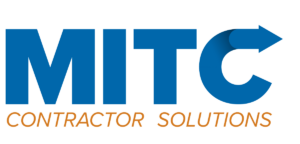What the Cheesecake Factory Lawsuit Means for Contractors
In a landmark case for contractors, a California court ruled that Cheesecake Factory Restaurants Inc. is jointly responsible for the labor violations of its contracted cleaning company. This ruling highlights the importance of effective workforce management tools for contractors.
An 18-month investigation found that subcontracted janitors in eight California Cheesecake Factory restaurants were denied breaks and overtime pay. The Los Angeles Times reports that each janitor “logged up to 10 hours of unpaid overtime each week because the workers were not allowed to leave after their eight-hour shift until a Cheesecake Factory kitchen manager reviewed their work.”
Cheesecake Factory and its cleaning contractor Americlean Janitorial Services Corp. are jointly liable for $4.2 million to cover the damages. Americlean’s subcontractor, Magic Touch Commercial Cleaning, is also responsible for part of the cost.
How the Ruling Raises the Bar for Contractors
The Cheesecake Factory lawsuit shows that a contractor’s workforce management shortfalls create risk for the hiring business, not just the contractor. Businesses do not want to acquire risk from a contractor. And they shouldn’t have to! But as the Cheesecake Factory case illustrates, companies cannot safely assume their contractors are upholding FLSA requirements. Since the ruling made a splash in the national headlines, businesses will be more careful about the contractors they choose.
This means you, as a contractor, must ensure your workforce management solutions are smart and efficient. Maybe you don’t mind using a poor solution to track hours and overtime, but your prospective clients will mind. Your competitors will look a lot better than you if you aren’t using effective workforce management tools!
Emphasizing Your Workforce Management Strengths
In our experience with hundreds of contractors who used all kinds of workforce management solutions, we have noticed a few trends. Successful businesses usually take three steps to strengthen their business operations.
The first step is to get rid of paper processes. These offer no visibility into your workforce. Problems that arise during the day can only be caught afterwards. But with automated solutions like time and attendance, you can receive alerts when someone hits overtime, fails to clock in/out, or anything else that matters to your business.
The second step is to enable employee self-service. With self-service, your employees can access their attendance records, pay stubs, schedules, and benefits from any web-enabled device, any time. This allows them to clock in/out onsite If they encounter a problem at the work site (e.g. they must stay past their shifts to wait for a kitchen manager, as in the Cheesecake Factory case), they can escalate the issue to managers immediately.
The third step is to integrate time and attendance with payroll. This is a simple way to ensure your employees are correctly paid. If an employee claims you made a mistake, you can compare his or her attendance and payroll history instantly. This protects you from errors, and it has the added benefit of eliminating data entry.
Stable workforce management processes are attractive to clients. They are more likely to hire you over another contractor if you can prove you are not a risk to their bottom line. With Contractor Workforce Management solutions, you can put your best foot forward!

 2018 MITC
2018 MITC


 Millennials are using technology at unprecedented levels.
Millennials are using technology at unprecedented levels. 


